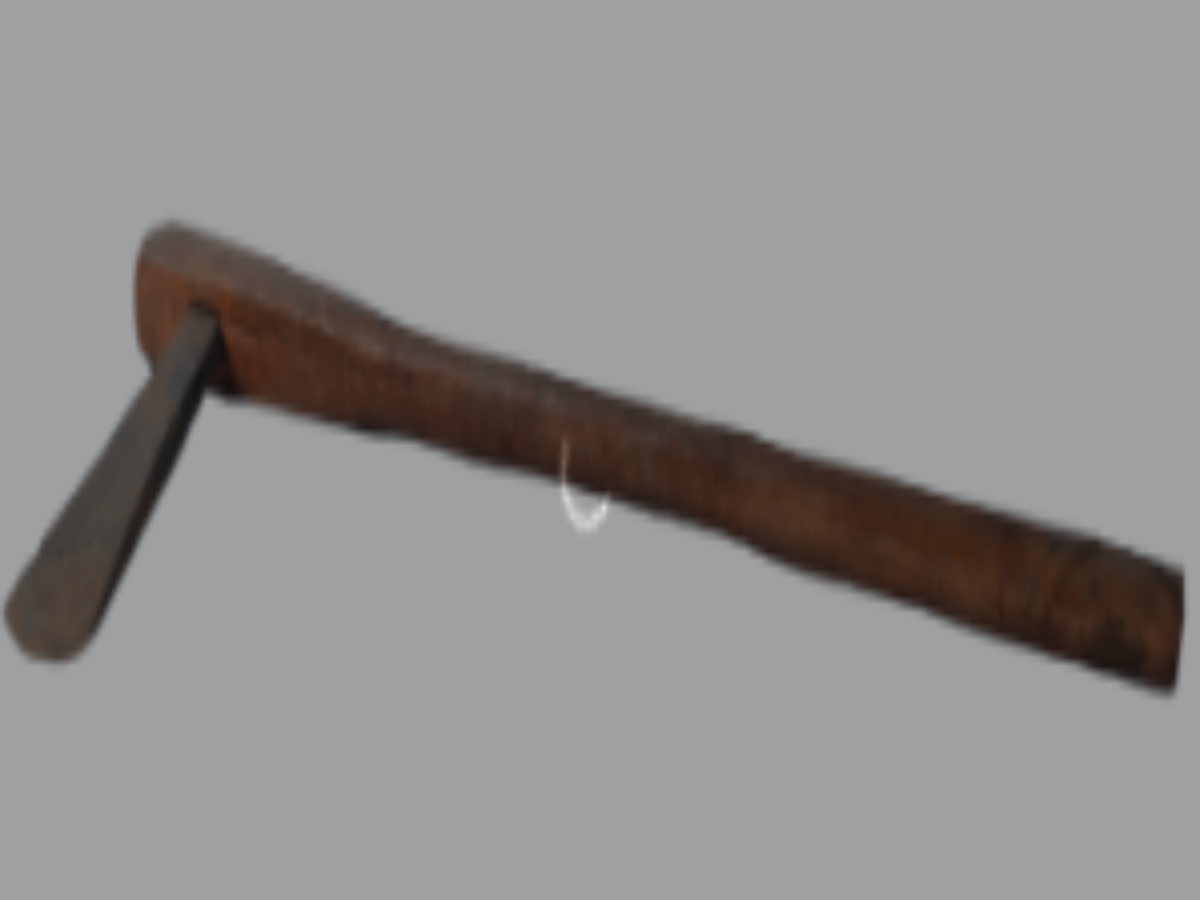State
Tribe Name
Art Type
short description
Angami village boys born and bred in Nagaland, axe, like other tribal tools in the Northeast, defines its identity through the utility craftsmanship related to culture. It has a rectangular iron blade with a sharp cutting edge, affixed securely to a wooden handle inserted into the socket on the blade. Such a fitting ensures both strength and durability, making such tools useable under all kinds of demanding daily tasks. All Angami Nagas also use this axe for purposes ranging from wood-cutting, land-clearing, agricultural operations, and sometimes combat and ceremonial events. The rectangular form of the blade, with a wide cutting surface, enables efficient chopping of wood and bamboo-these are the two most essential resources of the people's culture in the region.
Thumbnail

Filter Postion
Left
Filter Background
Off
Theme
Filter Header Image

content
Image

description
Angami village boys born and bred in Nagaland, axe, like other tribal tools in the Northeast, defines its identity through the utility craftsmanship related to culture. It has a rectangular iron blade with a sharp cutting edge, affixed securely to a wooden handle inserted into the socket on the blade. Such a fitting ensures both strength and durability, making such tools useable under all kinds of demanding daily tasks. All Angami Nagas also use this axe for purposes ranging from wood-cutting, land-clearing, agricultural operations, and sometimes combat and ceremonial events. The rectangular form of the blade, with a wide cutting surface, enables efficient chopping of wood and bamboo-these are the two most essential resources of the people's culture in the region.
This is a functional tool but also serves a symbolic purpose in tribal society. Such tools formerly denoted readiness for labor, warfare, or even sustenance, and would be carried with the tribal men during hunting trips or social events. They carry an impression on hand-forged iron implements like these regarding indigenous technology by the Naga people. Over the years, it has not changed much in terms of design, which shows that it has stood the test of time as far as function is concerned, as well as cultural permanence. Today, these items are the ethnological objects that keep the Angami Naga heritage and craftsmanship alive.
This is a functional tool but also serves a symbolic purpose in tribal society. Such tools formerly denoted readiness for labor, warfare, or even sustenance, and would be carried with the tribal men during hunting trips or social events. They carry an impression on hand-forged iron implements like these regarding indigenous technology by the Naga people. Over the years, it has not changed much in terms of design, which shows that it has stood the test of time as far as function is concerned, as well as cultural permanence. Today, these items are the ethnological objects that keep the Angami Naga heritage and craftsmanship alive.
Image Mode
landscape
promoted
On
Verified
Off
